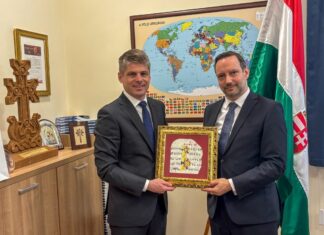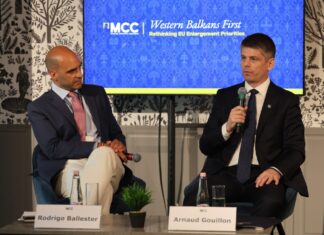 The rapid and consecutive launch of Artificial Intelligence (AI) tools over the past two years has generated a global frenzy. Large language models such as ChatGPT and Gemini have already amassed hundreds of millions of users and have been hailed as ushering in a new technological era marked by limitless data-driven insight and creativity. Global internet users have spent millions of hours interacting with Chatbots which offer companionship, emotional support and a humorous escape from daily life. Activists, artists and influencers have swiftly embraced AI image generators to create a stunning array of new visuals, including that of the Pope in a Puffer coat. This global frenzy has catapulted the worth of AI-related companies to the top of global markets with relatively new companies, such as OpenAI, being valued at $157 billion, and established companies, such as Nvidia, reaching a valuation of $3.4 trillion. Each new day brings with it new AI startups that promise to revolutionize healthcare, finance, transportation, education and e-commerce.
The rapid and consecutive launch of Artificial Intelligence (AI) tools over the past two years has generated a global frenzy. Large language models such as ChatGPT and Gemini have already amassed hundreds of millions of users and have been hailed as ushering in a new technological era marked by limitless data-driven insight and creativity. Global internet users have spent millions of hours interacting with Chatbots which offer companionship, emotional support and a humorous escape from daily life. Activists, artists and influencers have swiftly embraced AI image generators to create a stunning array of new visuals, including that of the Pope in a Puffer coat. This global frenzy has catapulted the worth of AI-related companies to the top of global markets with relatively new companies, such as OpenAI, being valued at $157 billion, and established companies, such as Nvidia, reaching a valuation of $3.4 trillion. Each new day brings with it new AI startups that promise to revolutionize healthcare, finance, transportation, education and e-commerce.
The soaring stock prices of AI companies and the accompanying frenzy may signal the beginning of “The Roaring 2020s”.
The implosion of AI has not passed unnoticed by digital diplomacy scholars. The past year has seen a plethora of seminars, workshops, conferences and academic articles all dedicated to analyzing how AI will impact diplomacy. However, most analyses of AI’s impact on diplomacy seem to ignore the history of digital diplomacy, which although brief, can offer insight into what AI-driven diplomacy might ultimately look like.
The history of digital diplomacy is not particularly long. Most scholars assert that digital diplomacy emerged circa 2012 with the advent of social media. Since then, diplomats have leveraged diverse technologies to obtain different goals including messaging apps, virtual meeting platforms, smartphone applications and data analytics. Yet the history of digital diplomacy suggests that diplomats’ use of digital technologies is not necessarily a result of digital affordances or even of diplomatic goals and objectives. Rather, the use of technologies in diplomacy is often shaped by financial logics and individual patterns of use.
The case study of social media suggests that the financial logic of digital technologies influences how these are used by diplomats and ministries of foreign affairs (MFAs). The financial logic of social media is rooted in the constant sharing of personal information which is transformed into data that can be analyzed and monetized thanks to algorithms. Social media users are expected to lead transparent lives that are constantly mediated online. This logic of total transparency had a real impact on how diplomats use Twitter, Facebook and the like. Such is the case with the live-tweeting of diplomatic summits, the live-streaming of UN deliberations and personal Selfies of Ambassadors and diplomats. Although these are mere “performances of transparency”, they demonstrate the impact of financial logics on diplomatic practices. Social media also demand that users summon the attention of their peers as part of “The Attention Economy”. MFAs also seek to summon the attention of users and to this end they have embraced satire and humor on social media, pop culture references to narrate wars and incivility as is the case with Chain’s Wolf Warrior Diplomacy.
Second, the history of digital diplomacy suggests that the media’s depiction of digital technologies also shapes diplomatic practices. When social media were framed by the media as “the harbingers of the Arab Spring” and new “Town Squares”, diplomats were encouraged to engage with social media users. Yet once social media were framed as “Echo Chambers” of hate and disinformation, diplomats were encouraged to find ways to combat disinformation and debunk misleading information online. In this way, the media depiction of social media led to a shift in diplomatic practices from digital engagement to information management.
Third, the history of digital diplomacy suggests that MFAs are impacted by personal use of technology. For instance, the use of social media by activists and citizen journalists to record and circulate images from protests, rallies and war zones in near-real time altered the trajectory of digital diplomacy. It was individual users of Facebook that pioneered the use of this platform to mediate events across the world in near-real time. Traditional media soon followed suit giving rise to what Phil Seib dubbed “Real Time Journalism”, or real time coverage of world events. Ultimately, diplomats responded by practicing “real-time diplomacy” or commenting and narrating world events as they unfold. Platforms such as Facebook, originally intended for managing personal ties, became contested political spaces which diplomats could not afford to ignore.
Thus, if one wishes to try and evaluate how AI may impact diplomacy, he or she would be wise to analyze the aforementioned factors. First, what is the financial logic of AI tools? Second, how is AI depicted in the media? Third, how are individuals using AI? This post cannot answer all these questions yet one interesting phenomenon that is already evident is individuals’ growing use of AI generated images to comment on world events including wars, conflicts and politics. Consider for instance the AI generated images below which trended on Facebook through the hashtag “Not A Scene from a Movie”. These images have all been used by Facebook users to comment on the current Israeli bombardment and relentless attack on the Gaza Strip. Over the past months, hundreds of AI generated images have been generated surrounding the Israeli bombardment.

What is also noticeable is that Embassies and MFAs are also using AI generated images in a similar way. Specifically, Embassies have started using AI images to comment on events, policies and actors. Consider for example, the AI images below, all Tweeted by Israeli Embassies across the world and referencing Israeli hostages held in Gaza. What emerges from these examples is a new form of visual narration of conflicts where activists and states use AI generated images to frame events on social media. AI images may increasingly be used in this ways by both individual users and states given the quick production of emotionally charged images that can summon the attention of social media users and thus obtain virality.

When most scholars discuss the use of AI in diplomacy they refer to insight-driven conflict management, automation of consular services through Chatbots or the use of AI to model and simulate negotiations. Yet the way in which AI is ultimately used by diplomats may differ greatly and may be determined not by the affordance of AI or even diplomatic goals but by external factors, such as how individuals use AI or the media’s depiction of AI-generated tools. These patterns have yet to emerge and will probably take time to do so long as the AI frenzy and the “The Roaring 2020s” continue in full force.













